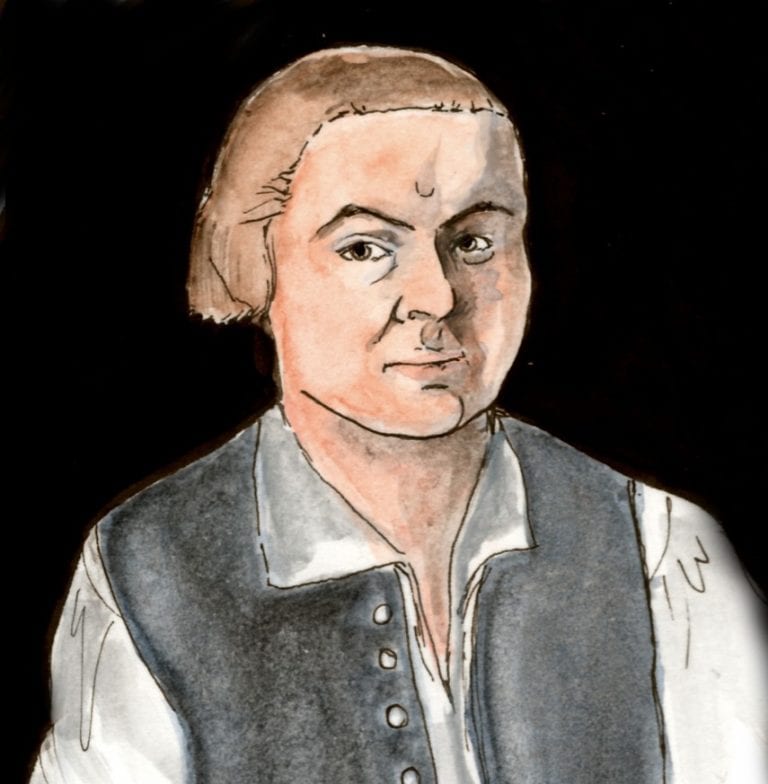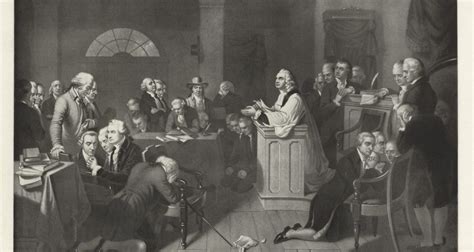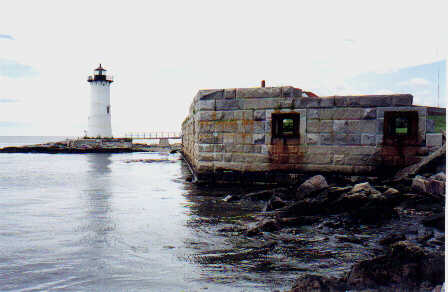Paul Revere took his first ride (Months before his famous horseback ride into American history on April 18, 1775) on the icy Boston Post Road to warn the citizens of New Hampshire of a potential British troop landing with the express purpose that they were going to be seizing firearms, cannons and gunpowder at Fort William and Mary. Had the British been more aggressive and the weather less ferocious, Revere’s “Portsmouth Alarm” may well have signaled an earlier start to the American Revolution. As it turned out, the resulting raid on Fort William and Mary by the seacoast area militia is considered by many as the first strike of the battle for independence.
Revere started toward Portsmouth in the same harsh weather. A combination of deep snow and slushy thaw had suddenly frozen into sharp icy furrows on the crude roadway. Revere’s 40 mile ride up the North Shore, across the Merrimack River to Hampton Falls and to Portsmouth was made more difficult by a biting west wind.
Revere arrived the same afternoon and met immediately with the local Whigs at the waterfront home of merchant Samuel Cutts. The Portsmouth Council of Correspondence learned from Revere that two regiments of British soldiers were coming by sea to protect the stockpiled ammunition at Fort William and Mary. In fact, they were not. The troops were assigned to more pressing duties with British General Gage in Massachusetts. But Revere and the Portsmouth leaders feared the worst. New Hampshire’s British Royal Governor John Wentworth had already dismissed meetings of the local Assembly. He had railed against the “infectious & pestilential disorders” of firebrands like Revere. Would British soldiers be billeted in the Seacoast? Would the munitions blockade snuff out plans for the upcoming Contiental Congress? The men of Portsmouth decided to act quickly.
Meanwhile, Loyalists in town immediately told Gov. Wentworth that the notorious Mr. Revere was holding a secret Whig meeting in town. Wentworth warned the half dozen soldiers at the fort and sent a courier immediately to Massachusetts requesting emergency British support from Generals Graves and Gage.
Graves ordered the sloop HMS Canceaux toward Portsmouth, but it arrived too late. A day after Revere’s alarm, 200-400 Portsmouth area men had stormed the garrison, hauled down the British flag and disappeared into the falling snow with 100 barrels of stolen gunpowder. The next day, roused by word of Revere’s message, a thousand men assembled in Portsmouth and returned to the fort to remove muskets and cannons. These munitions would soon be dispersed throughout the seacoast and find their way to a crucial battle at Bunker Hill, where NH men would again play a key role.
(Source)
Recommended Books:
 “Listen, my children, and you shall hear/Of the midnight ride of Paul Revere …” So begins one of the most stirring poems in American literature. Henry Wadsworth Longfellow wrote “Paul Revere’s Ride” in 1861, nearly 100 years after the actual midnight ride that began on April 18, in 1775. The poem creates a suspenseful story as American colonist Paul Revere decides with his friend Robert Newman and others to avert a British attack on Concord, Massachusetts. The British had come from Boston in search of the colonists’ arms supply. What Revere and his friends didn’t know was whether the Redcoats would come by land (around the mouth of the Charles River) or by sea (across the river). Newman spotted the British “by sea” and signaled from the Old North Church tower to Revere, who was “Ready to ride and spread the alarm/Through every Middlesex village and farm,/For the country folk to be up and to arm.” And, by morning, the country folk were ready, indeed. “Chasing the red-coats down the lane,/Then crossing the fields to emerge again/Under the trees at the turn of the road,/And only pausing to fire and load.” This battle, the first of the American Revolution, drove the British back to Boston.
“Listen, my children, and you shall hear/Of the midnight ride of Paul Revere …” So begins one of the most stirring poems in American literature. Henry Wadsworth Longfellow wrote “Paul Revere’s Ride” in 1861, nearly 100 years after the actual midnight ride that began on April 18, in 1775. The poem creates a suspenseful story as American colonist Paul Revere decides with his friend Robert Newman and others to avert a British attack on Concord, Massachusetts. The British had come from Boston in search of the colonists’ arms supply. What Revere and his friends didn’t know was whether the Redcoats would come by land (around the mouth of the Charles River) or by sea (across the river). Newman spotted the British “by sea” and signaled from the Old North Church tower to Revere, who was “Ready to ride and spread the alarm/Through every Middlesex village and farm,/For the country folk to be up and to arm.” And, by morning, the country folk were ready, indeed. “Chasing the red-coats down the lane,/Then crossing the fields to emerge again/Under the trees at the turn of the road,/And only pausing to fire and load.” This battle, the first of the American Revolution, drove the British back to Boston.
 Paul Revere’s midnight ride looms as an almost mythical event in American history–yet it has been largely ignored by scholars and left to patriotic writers and debunkers. Now one of the foremost American historians offers the first serious look at the events of the night of April 18, 1775–what led up to it, what really happened, and what followed–uncovering a truth far more remarkable than the myths of tradition.
Paul Revere’s midnight ride looms as an almost mythical event in American history–yet it has been largely ignored by scholars and left to patriotic writers and debunkers. Now one of the foremost American historians offers the first serious look at the events of the night of April 18, 1775–what led up to it, what really happened, and what followed–uncovering a truth far more remarkable than the myths of tradition.
In Paul Revere’s Ride, David Hackett Fischer fashions an exciting narrative that offers deep insight into the outbreak of revolution and the emergence of the American republic. Beginning in the years before the eruption of war, Fischer illuminates the figure of Paul Revere, a man far more complex than the simple artisan and messenger of tradition. Revere ranged widely through the complex world of Boston’s revolutionary movement–from organizing local mechanics to mingling with the likes of John Hancock and Samuel Adams. When the fateful night arrived, more than sixty men and women joined him on his task of alarm–an operation Revere himself helped to organize and set in motion. Fischer recreates Revere’s capture that night, showing how it had an important impact on the events that followed. He had an uncanny gift for being at the center of events, and the author follows him to Lexington Green–setting the stage for a fresh interpretation of the battle that began the war. Drawing on intensive new research, Fischer reveals a clash very different from both patriotic and iconoclastic myths. The local militia were elaborately organized and intelligently led, in a manner that had deep roots in New England. On the morning of April 19, they fought in fixed positions and close formation, twice breaking the British regulars. In the afternoon, the American officers switched tactics, forging a ring of fire around the retreating enemy which they maintained for several hours–an extraordinary feat of combat leadership. In the days that followed, Paul Revere led a new battle– for public opinion–which proved even more decisive than the fighting itself.
When the alarm-riders of April 18 took to the streets, they did not cry, “the British are coming,” for most of them still believed they were British. Within a day, many began to think differently. For George Washington, Thomas Jefferson, John Adams, and Thomas Paine, the news of Lexington was their revolutionary Rubicon. Paul Revere’s Ride returns Paul Revere to center stage in these critical events, capturing both the drama and the underlying developments in a triumphant return to narrative history at its finest.
 Paul Revere ( December 21, 1734 – May 10, 1818) was an American silversmith, engraver, early industrialist, and a patriot in the American Revolution. He is most famous for alerting the Colonial militia to the approach of British forces before the battles of Lexington and Concord, as dramatized in Henry Wadsworth Longfellow’s poem, “Paul Revere’s Ride”. Revere was a prosperous and prominent Boston silversmith, who helped organize an intelligence and alarm system to keep watch on the British military. Revere later served as a Massachusetts militia officer, though his service culminated after the Penobscot Expedition, one of the most disastrous campaigns of the American Revolutionary War, for which he was absolved of blame. Following the war, Revere returned to his silversmith trade and used the profits from his expanding business to finance his work in iron casting, bronze bell and cannon casting, and the forging of copper bolts and spikes. Finally in 1800 he became the first American to successfully roll copper into sheets for use as sheathing on naval vessels.
Paul Revere ( December 21, 1734 – May 10, 1818) was an American silversmith, engraver, early industrialist, and a patriot in the American Revolution. He is most famous for alerting the Colonial militia to the approach of British forces before the battles of Lexington and Concord, as dramatized in Henry Wadsworth Longfellow’s poem, “Paul Revere’s Ride”. Revere was a prosperous and prominent Boston silversmith, who helped organize an intelligence and alarm system to keep watch on the British military. Revere later served as a Massachusetts militia officer, though his service culminated after the Penobscot Expedition, one of the most disastrous campaigns of the American Revolutionary War, for which he was absolved of blame. Following the war, Revere returned to his silversmith trade and used the profits from his expanding business to finance his work in iron casting, bronze bell and cannon casting, and the forging of copper bolts and spikes. Finally in 1800 he became the first American to successfully roll copper into sheets for use as sheathing on naval vessels.



